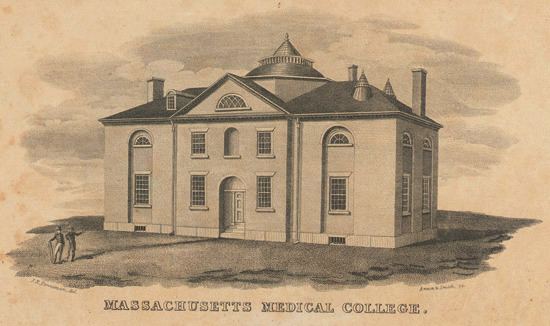Type Medical school Undergraduate tuition and fees 45,050 USD (2010) Phone +1 617-432-1000 Founded 1782 | Acceptance rate 3.7% (2015) Total enrollment 1,660 (2015) Founder John Warren | |
 | ||
Established September 19, 1782 (1782-09-19) Academic affiliation See list for affiliations Notable alumni Jill Stein, Haruko Obokata, George M Church, Alex Grey, Atul Gawande Similar Harvard University, Massachusetts Institute of Technology, Stanford University School of, Stanford University, Yale School of Medicine Profiles | ||
Welcome to harvard medical school fabric 2015
Harvard Medical School (HMS) is the graduate medical school of Harvard University. It is located in the Longwood Medical Area of the Mission Hill neighborhood of Boston, Massachusetts.
Contents
- Welcome to harvard medical school fabric 2015
- History
- Teaching affiliates
- Curriculum
- Second year show
- Societies
- Partners Harvard Medical International
- References
The school has a large and distinguished faculty to support its missions of education, research, and clinical care. These faculty hold appointments in the basic science departments on the HMS Quadrangle, and in the clinical departments located in multiple Harvard-affiliated hospitals and institutions in Boston. There are approximately 2,900 full- and part-time voting faculty members consisting of assistant, associate, and full professors, and over 5,000 full or part-time, non-voting instructors.
History
The school is the third-oldest medical school in the United States (after Perelman School of Medicine at the University of Pennsylvania and Columbia University College of Physicians and Surgeons) and was founded by John Warren on September 19, 1782, with Benjamin Waterhouse, and Aaron Dexter. The first lectures were given in the basement of Harvard Hall and then in Holden Chapel. The first class, composed of two students, graduated in 1788.
It moved from Cambridge to 49 Marlborough Street in Boston in 1810. From 1816 to 1846, the school, known as Massachusetts Medical College of Harvard University, was located on Mason Street. In 1847 the school relocated to North Grove Street, and then to Copley Square in 1883.
The school moved to its current location on Longwood Avenue in 1906, where the "Great White Quadrangle" or HMS Quad with its five white marble buildings was established. The architect for the campus was the Boston firm of Shepley, Rutan and Coolidge.
In 1945 the first class of women was admitted, after a special committee concluded that male students would benefit from learning to view women as equals, that the lower-paid specialties typically shunned by men would benefit from the talents of married women doctors, and that the weakest third of each entering class of men could be replaced by a superior group of women.
The four major flagship teaching hospitals of Harvard Medical School are Beth Israel Deaconess Medical Center, Brigham and Women's Hospital, Boston Children's Hospital, and Massachusetts General Hospital.
Teaching affiliates
Curriculum
In 2015, Harvard introduced a new "Pathways" curriculum, intended to "foster active learning and critical thinking; earlier clinical experience; and advanced clinical and student-tailored basic/population science experiences that will provide customized pathways for every student."
The Harvard-MIT Division of Health Sciences and Technology (HST) offers an alternative MD program with a stronger emphasis on biomedical research. The HST MD program is significantly smaller than the Pathways program, accepting only 30 applicants every year.
Second-year show
Every winter, second year students at HMS write, direct, and perform a full-length musical parody of Harvard, their professors, and themselves. The year 2007 was the centennial performance as the Class of 2009 presented "Joseph Martin and the Amazing Technicolor White Coat" to sellout crowds at Roxbury Community College on February 22, 23, and 24.
Societies
Upon matriculation, medical students at Harvard Medical School are divided into five societies named after famous alumni. Each society has an advisory dean along with several associate deans who serve as academic advisors to students. Students work in small group tutorials and lab sessions within their societies. Every year, the five societies compete in "Society Olympics" for the famed "Pink Flamingo" trophy in a series of events (e.g., dance-off, dodgeball, limbo contest) that test the unorthodox talents of the students in each society.
Partners Harvard Medical International
Harvard Medical School (HMS) has a medical-consulting arm, Partners Harvard Medical International (PHMI). PHMI has long-standing collaborative relationships with medical faculties at Ludwig Maximilians University in Munich, Germany, Alfaisal University, Riyadh, Saudi Arabia and the Lebanese American University (LAU) in Beirut, Lebanon. Other long-standing relationships include PHMI's work with Asan Medical Center in Seoul, South Korea, and Tokyo Medical and Dental University in Japan. In 2007 PHMI began a 10‑year collaboration with Lebanese American University; in October 2009 LAU opened a new medical school with assistance from PHMI.
